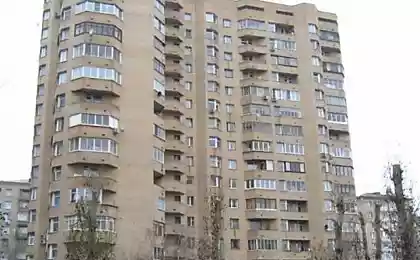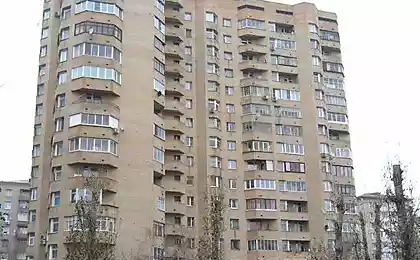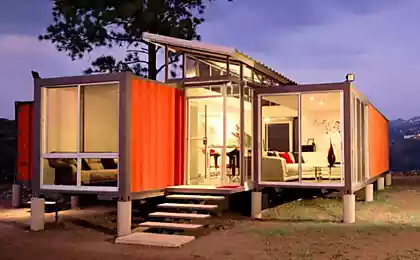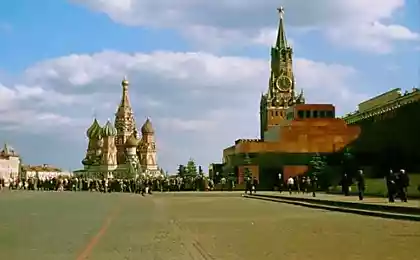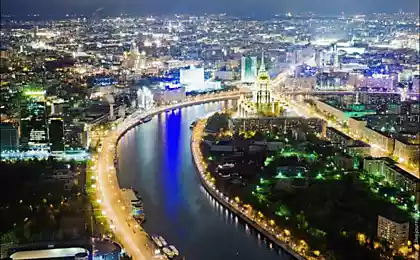719
The old system. A collection of the most ancient houses of Moscow
Moscow is truly a city of contrasts. Here on the same street are the glass business centers and chambers of the guardsmen of the XVI century. Although the neighborhood Muscovites have long been no surprise, citizens sometimes do not know that every day on the way to work, pass by the historical monument. We have collected the most old houses that have survived in the capital, and looked as they look today.

Chamber Golitsyn. 2016
Spassky Cathedral of Spaso-Andronnikov monastery
According to the Chronicles, the first monastery on the banks of the Yauza was laid in 1357. Built in the time of wood, and therefore the first option of the Saviour Cathedral was made of wood. Some evidence, however, suggests that the Church was already stone floor.
11 years after the construction the building suffered from a fire, it was restored, but further from the tree refused: in the period between 1420 and 1427 years the Cathedral was rebuilt: the building was stone.
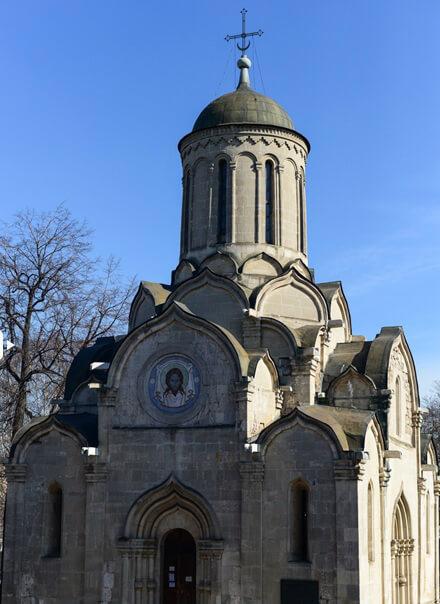
2016

In the painting of the Church was attended by the famous Russian Church icon painters Andrey Rublev and Daniil Cherny. Today there remains only the individual elements of the pattern on the Windows of the building.
In 1812, the Cathedral was again destroyed, but in the next year began a major reconstruction. In particular, was a iron roof, built a new iconostasis, rebuilt the porch, aisles and a dome.
In the Soviet years the temple was to be demolished, however after inspection of the building became apparent its architectural value. In the result, the Church managed to survive to the present day. Today it is the oldest stone building in Moscow.
The Cathedral of the assumption
The Cathedral of the assumption was laid in the day when Ivan Kalita was Prince of Moscow in 1326. This building was the first stone Church in Moscow, but after 100 years was destroyed. In 1471, the Cathedral began to reconstruct, however, because of what happened in the year 1474 the earthquake, the unfinished walls of the building again collapsed.
For the restoration of the Cathedral in Moscow invited Italian architect Aristotle Fioravanti. In 1479 he built here a new Church. A few years later was completed and preserved today, the construction of the Moscow Kremlin — the Annunciation Cathedral and the faceted chamber.

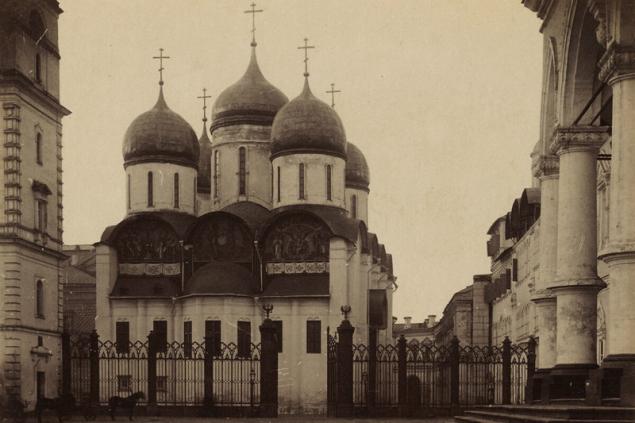
The walls of the Dormition Cathedral has seen many significant events. It was here in 1547 was crowned Ivan the terrible, and in 1613 took the Zemsky Sobor, which elected Tsar Mikhail Fedorovich. The Cathedral remained the place of coronation of Russian tsars, even in the period when the Royal residence was in St. Petersburg.
In 1918 the temple was the last Easter service. After moving into the Kremlin, the government of the Russian Federation it was closed for worship. Today, the Cathedral held a separate service for the blessing of the Patriarch.
English court
In the XV century one Ivan Bobrischev nicknamed soup (or the court of Basil III, or Ivan the terrible) built in Zaryadye, on the street Varvarka, residential two-storey chamber of white stone. However, the owner had no heirs, so the building became the property of the Prince.

2016
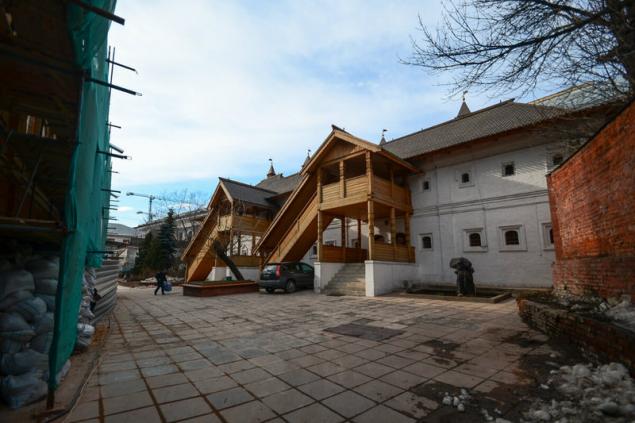
After opening in 1553 Richard Cancellara the Northern sea route that connected England and Russia, Ivan the terrible became interested in establishing trade relations with Europe. The king gave the English customs and trading privileges granted chambers in Zaryadye for creation of Russia's first foreign Embassy.
The place was not chosen by chance — in the sixteenth century barbarian was one of the busiest shopping streets of the capital. Chamber Bobrysheva has grown around appeared sad. English merchants were active in trade with the locals.
In 1636 merchants acquired in the capital of another building, which was located in the White city at the Ilyinsky gates. Later it became known as New the English courtyard and the house on the Varvarka — Old.
Trade relations with England were severed in 1649. Then the chamber moved to a relative of the king of boyar Miloslavskogo. After that farmsteads are often changed owners. Each of them was rebuilt chamber, which they have lost their original appearance.
Palace of Vasily III
According to legend, on the spot where now is located on Staraya Basmannaya street, in the distant 1395 Muscovites met the Vladimir icon of the mother of God, which "saved" Russia from the invasion of the army of Tamerlane.
According to another legend, some time later, Vasily III built here his Palace (a building for the rest of the nobles during the long road). But until recently it was believed that if the residence has ever existed, then was destroyed many years ago.

2016
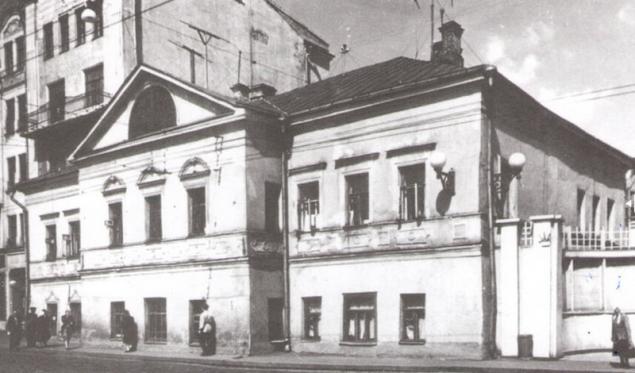
However, in 2003, during the restoration of Golitsyn's house on Basmannaya historians have found that inside the house is preserved interiors and layout of the other buildings — the Palace of the Track. It turned out that in the XVIII century, its walls have become the basis for the future of the estate.
Today "double" monument of architecture is a nondescript two-story structure with yellow-and-pink façade. Travel Palace was the oldest surviving secular building in Moscow outside the Earthen city.
Chamber Golitsyn
Another ancient structure, which once belonged to the princely family Golitsyn, is located on Krivokolenny pereulok. This two-storey house, which was built in the XVII century and during its long history has changed many owners.
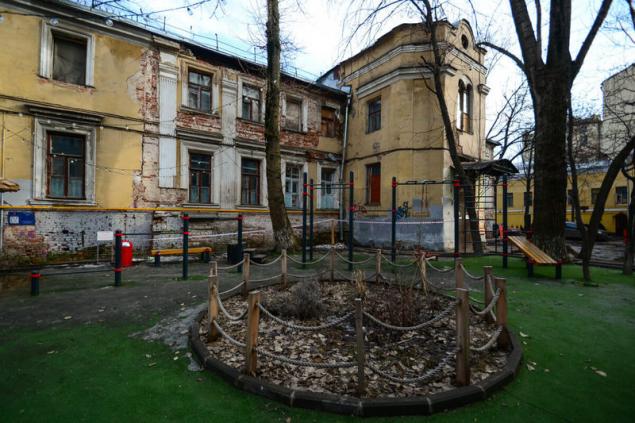
2016
First, the house belonged to the chief Marshal during the reign of Catherine I, then, a naval captain Urusovo, then the manufacturer Melnikov, then as a collegiate Advisor to Chebyshev, who gave the building by inheritance to his daughter Catherine.
In the middle of the XVIII century, she married Peter Golitsyn, and the house became princely family. In the XIX century part of the building was used as a hotel, and in the beginning of XX century here was situated the printing house, where in 1914 he worked Yesenin.
In Golitsyn's wards are still living people, so they are considered to be the oldest residential house in Moscow.
Dried in the Simonov monastery
Simonov monastery was founded on the banks of the Moscow river in the second half of the XIV century. Among other buildings on its territory there are the most ancient "high-rise" building.
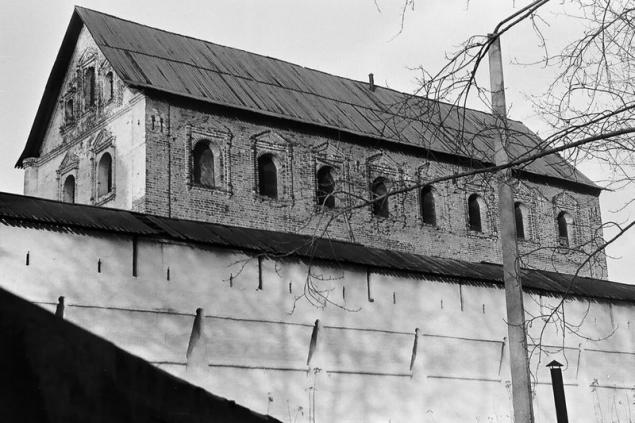
Solodina, it is also a granary (a building for food storage, drying grain and malt), was built in XVI-XVII centuries for the storage of products of the monastery. According to some, in the same building was the monastic dining room.
The building consists of five floors, well above the other houses of the time. We can say that this is Moscow's first "high-rise".
Estate Khitrovo
The first mention of the estate on Yauzskaya Boulevard belongs to the second half of the XVII century. At that time there was a wooden house, which was the owner of Stolnik Golovin. After his death the building was inherited by his son, who built the next house Church. Stone manor appeared only in 1757, after the wooden buildings burned in the fire.
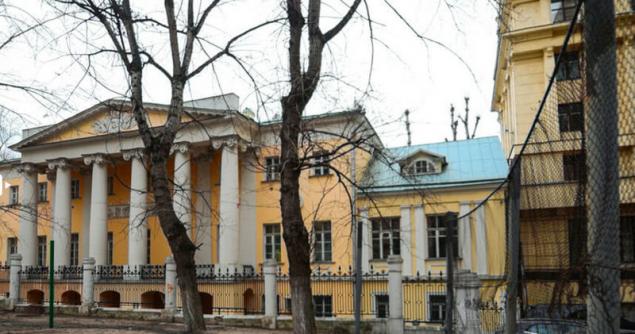
2016
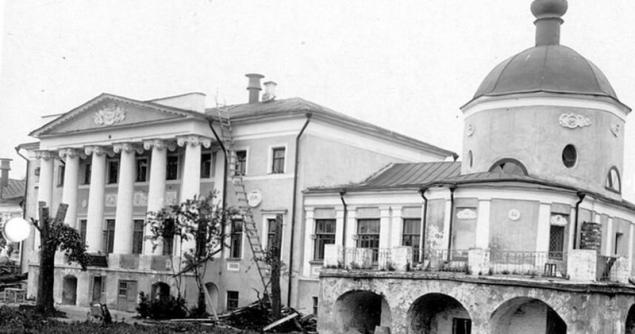
In 1822 the estate was purchased by major-General Nikolai Khitrovo. He completely rebuilt the building and the façade was adorned the coat of arms Khitrovo, which survived until our days.
A year later Khitrovo bought adjacent land to build a meat and vegetable market. However, in 1826, he died, and not having to create a shopping arcade.
Free space on Khitrovskaya square was quickly filled by craftsmen and merchants, appeared around the Inns and lodging-houses. It originated the famous Khitrovka — a haven of thugs and juvenile thieves.
After the death of General building was acquired by the merchant's wife Nemchinov, then the estate passed to Colonel Orlov. In 1889, according to his will, the house made a hospital for the poor. In 1919 the Church when the estate was closed, and in 1932 and was demolished because it interfered with the construction of a house.
Today the historic building is hidden in the yard of inhabited high-rise building, it is a medical College named after Clara Zetkin.
Historical mosque
The first mosque appeared in Moscow in the XVIII century, but after the fire of 1812, the building was completely destroyed. Therefore, the Muslim community asked the city government permission to build a new Church, but was refused.

2016

In 1823, to build the sanctuary was allowed, but on condition that a house of worship will not be called a mosque and outwardly will not differ from the nearby mansions. So for a long time the mosque existed in the form of a nondescript one-storey building on Bolshaya Tatarskaya street.
To rebuild the building to the Muslims succeeded in 1882. It increased in size, and the roof was built tall minarets.
In Soviet times there was a printing house and the military. The mosque was once again opened doors in 1993. published
P. S. And remember, only by changing their consumption — together we change the world! ©
Join us in Facebook , Vkontakte, Odnoklassniki
Source: www.livejournal.com/magazine/1453671.html

Chamber Golitsyn. 2016
Spassky Cathedral of Spaso-Andronnikov monastery
According to the Chronicles, the first monastery on the banks of the Yauza was laid in 1357. Built in the time of wood, and therefore the first option of the Saviour Cathedral was made of wood. Some evidence, however, suggests that the Church was already stone floor.
11 years after the construction the building suffered from a fire, it was restored, but further from the tree refused: in the period between 1420 and 1427 years the Cathedral was rebuilt: the building was stone.

2016

In the painting of the Church was attended by the famous Russian Church icon painters Andrey Rublev and Daniil Cherny. Today there remains only the individual elements of the pattern on the Windows of the building.
In 1812, the Cathedral was again destroyed, but in the next year began a major reconstruction. In particular, was a iron roof, built a new iconostasis, rebuilt the porch, aisles and a dome.
In the Soviet years the temple was to be demolished, however after inspection of the building became apparent its architectural value. In the result, the Church managed to survive to the present day. Today it is the oldest stone building in Moscow.
The Cathedral of the assumption
The Cathedral of the assumption was laid in the day when Ivan Kalita was Prince of Moscow in 1326. This building was the first stone Church in Moscow, but after 100 years was destroyed. In 1471, the Cathedral began to reconstruct, however, because of what happened in the year 1474 the earthquake, the unfinished walls of the building again collapsed.
For the restoration of the Cathedral in Moscow invited Italian architect Aristotle Fioravanti. In 1479 he built here a new Church. A few years later was completed and preserved today, the construction of the Moscow Kremlin — the Annunciation Cathedral and the faceted chamber.


The walls of the Dormition Cathedral has seen many significant events. It was here in 1547 was crowned Ivan the terrible, and in 1613 took the Zemsky Sobor, which elected Tsar Mikhail Fedorovich. The Cathedral remained the place of coronation of Russian tsars, even in the period when the Royal residence was in St. Petersburg.
In 1918 the temple was the last Easter service. After moving into the Kremlin, the government of the Russian Federation it was closed for worship. Today, the Cathedral held a separate service for the blessing of the Patriarch.
English court
In the XV century one Ivan Bobrischev nicknamed soup (or the court of Basil III, or Ivan the terrible) built in Zaryadye, on the street Varvarka, residential two-storey chamber of white stone. However, the owner had no heirs, so the building became the property of the Prince.

2016

After opening in 1553 Richard Cancellara the Northern sea route that connected England and Russia, Ivan the terrible became interested in establishing trade relations with Europe. The king gave the English customs and trading privileges granted chambers in Zaryadye for creation of Russia's first foreign Embassy.
The place was not chosen by chance — in the sixteenth century barbarian was one of the busiest shopping streets of the capital. Chamber Bobrysheva has grown around appeared sad. English merchants were active in trade with the locals.
In 1636 merchants acquired in the capital of another building, which was located in the White city at the Ilyinsky gates. Later it became known as New the English courtyard and the house on the Varvarka — Old.
Trade relations with England were severed in 1649. Then the chamber moved to a relative of the king of boyar Miloslavskogo. After that farmsteads are often changed owners. Each of them was rebuilt chamber, which they have lost their original appearance.
Palace of Vasily III
According to legend, on the spot where now is located on Staraya Basmannaya street, in the distant 1395 Muscovites met the Vladimir icon of the mother of God, which "saved" Russia from the invasion of the army of Tamerlane.
According to another legend, some time later, Vasily III built here his Palace (a building for the rest of the nobles during the long road). But until recently it was believed that if the residence has ever existed, then was destroyed many years ago.

2016

However, in 2003, during the restoration of Golitsyn's house on Basmannaya historians have found that inside the house is preserved interiors and layout of the other buildings — the Palace of the Track. It turned out that in the XVIII century, its walls have become the basis for the future of the estate.
Today "double" monument of architecture is a nondescript two-story structure with yellow-and-pink façade. Travel Palace was the oldest surviving secular building in Moscow outside the Earthen city.
Chamber Golitsyn
Another ancient structure, which once belonged to the princely family Golitsyn, is located on Krivokolenny pereulok. This two-storey house, which was built in the XVII century and during its long history has changed many owners.

2016
First, the house belonged to the chief Marshal during the reign of Catherine I, then, a naval captain Urusovo, then the manufacturer Melnikov, then as a collegiate Advisor to Chebyshev, who gave the building by inheritance to his daughter Catherine.
In the middle of the XVIII century, she married Peter Golitsyn, and the house became princely family. In the XIX century part of the building was used as a hotel, and in the beginning of XX century here was situated the printing house, where in 1914 he worked Yesenin.
In Golitsyn's wards are still living people, so they are considered to be the oldest residential house in Moscow.
Dried in the Simonov monastery
Simonov monastery was founded on the banks of the Moscow river in the second half of the XIV century. Among other buildings on its territory there are the most ancient "high-rise" building.

Solodina, it is also a granary (a building for food storage, drying grain and malt), was built in XVI-XVII centuries for the storage of products of the monastery. According to some, in the same building was the monastic dining room.
The building consists of five floors, well above the other houses of the time. We can say that this is Moscow's first "high-rise".
Estate Khitrovo
The first mention of the estate on Yauzskaya Boulevard belongs to the second half of the XVII century. At that time there was a wooden house, which was the owner of Stolnik Golovin. After his death the building was inherited by his son, who built the next house Church. Stone manor appeared only in 1757, after the wooden buildings burned in the fire.

2016

In 1822 the estate was purchased by major-General Nikolai Khitrovo. He completely rebuilt the building and the façade was adorned the coat of arms Khitrovo, which survived until our days.
A year later Khitrovo bought adjacent land to build a meat and vegetable market. However, in 1826, he died, and not having to create a shopping arcade.
Free space on Khitrovskaya square was quickly filled by craftsmen and merchants, appeared around the Inns and lodging-houses. It originated the famous Khitrovka — a haven of thugs and juvenile thieves.
After the death of General building was acquired by the merchant's wife Nemchinov, then the estate passed to Colonel Orlov. In 1889, according to his will, the house made a hospital for the poor. In 1919 the Church when the estate was closed, and in 1932 and was demolished because it interfered with the construction of a house.
Today the historic building is hidden in the yard of inhabited high-rise building, it is a medical College named after Clara Zetkin.
Historical mosque
The first mosque appeared in Moscow in the XVIII century, but after the fire of 1812, the building was completely destroyed. Therefore, the Muslim community asked the city government permission to build a new Church, but was refused.

2016

In 1823, to build the sanctuary was allowed, but on condition that a house of worship will not be called a mosque and outwardly will not differ from the nearby mansions. So for a long time the mosque existed in the form of a nondescript one-storey building on Bolshaya Tatarskaya street.
To rebuild the building to the Muslims succeeded in 1882. It increased in size, and the roof was built tall minarets.
In Soviet times there was a printing house and the military. The mosque was once again opened doors in 1993. published
P. S. And remember, only by changing their consumption — together we change the world! ©
Join us in Facebook , Vkontakte, Odnoklassniki
Source: www.livejournal.com/magazine/1453671.html
The most beautiful views of blooming rhododendrons for Your garden
Business milk: suburban cheesemaker on personal experience








